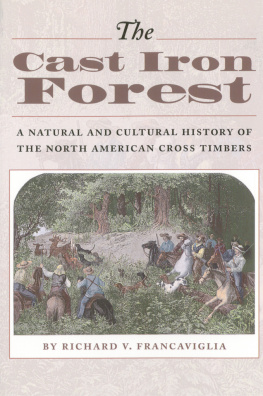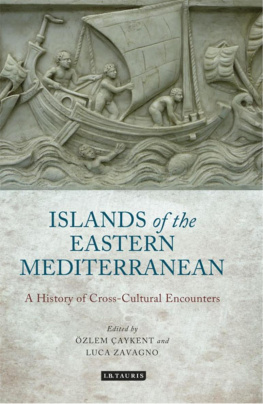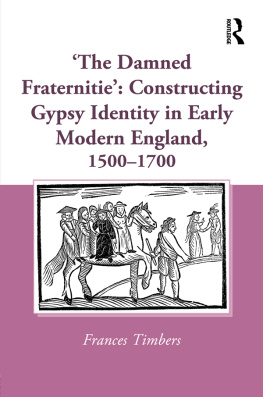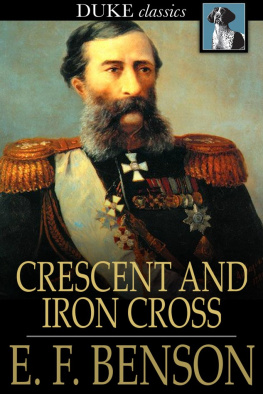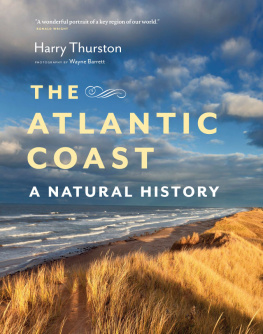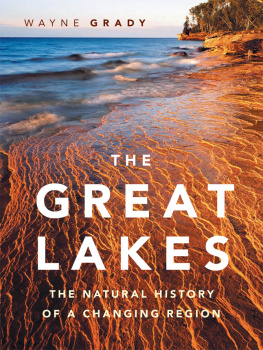THE CAST IRON FOREST
Corrie Herring Hooks Series, Number Forty-three

BY RICHARD V. FRANCAVIGLIA
The Cast Iron Forest
A NATURAL AND CULTURAL HISTORY OF THE NORTH AMERICAN CROSS TIMBERS

University of Texas Press
Austin
: Cross Timbers Vista, Indian Territory, by Richard V. Francaviglia, 1998.
Copyright 2000 by the University of Texas Press
All rights reserved
Printed in the United States of America
First edition, 2000
Requests for permission to reproduce material from this work should be sent to Permissions, University of Texas Press, P.O. Box 7819, Austin, TX 78713-7819.
LIBRARY OF CONGRESS CATALOGING-IN-PUBLICATION DATA
Francaviglia, Richard V.
The cast iron forest : a natural and cultural history of the North American Cross Timbers / Richard V. Francaviglia.1st ed.
p. cm. (Corrie Herring Hooks series ; no. 43)
Includes bibliographical references and index.
ISBN 0-292-72515-9 (cl. : alk. paper) ISBN 0-292-72516-7 (pbk. : alk. paper)
1. Natural historyCross Timbers (Okla. and Tex.) 2. Human ecologyCross Timbers (Okla. and Tex.) 3. Cross Timbers (Okla. and Tex.) I. Title. II. Series.
QH104.5.C74 F73 2000
508.7645dc21 99-052955
ISBN 978-0-292-75638-0 (e-book)
ISBN 9780292756380 (individual e-book)
Dedicated to my parents,
Faye Riffin and Vic Riffin,
who recognized and encouraged my early interest in natural history.
ACKNOWLEDGMENTS
Many people enthusiastically helped in the research and writing of this book by generously providing information and encouragement. Folklorist Richard (Dick) Meyer of Salem, Oregon; Towana Spivey of Fort Sill, Oklahoma; historian T. Lindsay Baker of Rio Vista, Texas; artist Jane Starks of Dallas; Lea Ann Layne, city arborist of Arlington, Texas; Phil Huey of Cleburne, Texas; James Steely of the Texas Historical Commission in Austin; David Diamond, University of Missouri; Eric White, Special Collections, Bridwell Library, Southern Methodist University, Dallas; Ben Huseman, curator of the Amon Carter Museum in Fort Worth, and Ron Tyler of the Texas State Historical Association; Kevin and Cheryl Vogel, Valley House Gallery, Dallas; Wayne Clark, Mike Griswold, and Suzanne Tuttle of the Fort Worth Nature Center; David Jackson and John Crain, Summerlee Foundation of Dallas; David Riskind, Texas Parks and Wildlife; Judge Paul Pressler of Houston, Texas; historian Ty Cashion of Huntsville, Texas; Ben Scott of Arlington, Texas; Larry Schaapreld, Texas Forest Service; Michael Porter, Chuck Coffey, Charlie Griffith, and Russell Stevens of the Noble Foundation, Ardmore, Oklahoma; Ed Barron, Texas Forest Service, College Station; and Barney Lipscomb, Botanic Research Institute of Texas, Fort Worth; Jim Windier and Tom Blagg of Maguire Thomas Partners, Roanoke, Texas, provided helpful information on the Solana site near South Lake; David W. Stahle, University of Arkansas at Fayetteville; Joe Todd, Chester Cowen, and the staff at the Oklahoma Historical Society in Oklahoma City; the staff at the University of Oklahoma Library were especially helpful in providing historical photographs. Geographers Douglas A. Hurt, Blake Gumprecht, and Bruce Hoagland of the University of Oklahoma shared their interest in the Cross Timbers after learning of this book at the Southwestern Association of American Geographers meeting in Baton Rouge, Louisiana. At the University of Texas at Austin, Linda Peterson, of the Center for American History, and Richard Oram and Steve Lawson, of the Harry Ransom Humanities Research Center were very helpful in providing photographs.
At my universityThe University of Texas at ArlingtonI received special assistance and encouragement from library staff members Ann Kelley, Jane Boley, Betty Wood, Sally Gross, and Katherine Kit Goodwin; at the Center for Greater Southwestern Studies and the History of Cartography, graduate research assistant Jimmy Bryan did an admirable job of compiling tables of census statistics on the population and economy of Cross Timbers counties; and administrative secretaries Darlene McAllister and Lois Lettini deserve special mention for typing numerous drafts of the manuscript. Joel Quintans, production manager of UTA Publications Office, assisted in drafting several of the maps; philosophy professor Julia Dyson recommended studies of oak trees in classical literature, and history professor Don Kyle provided assistance in translating Homers references to oak trees. Similarly, geology professors Donald Reaser and Burk Burkhart helped by reviewing the geology and soils sections of the manuscript. Biology professor Robert Neill was especially helpful in recommending articles about the natural history of the Cross Timbers. Several students, including Bill Wilson and Alta Vick, were enthusiastic about the Cross Timbers role in Texas history and wrote reports on maps of the region in my cartographic history courses. Two esteemed colleaguesGerald Saxon of University of Texas at Arlingtons Special Collections and David Buisseret, the Jenkins and Virginia Garrett Endowed Chair in Southwestern Studies and the History of Cartographyhelped by reading the manuscript and offering suggestions for its improvement. To these and others not named I express my sincere thanks for help with this book.
THE CAST IRON FOREST
... They stood like oaks which lift up their crowns in the mountains, and day upon day resist the wind and rain, perpetually gripping the ground with their mighty roots
HOMER, The Iliad
INTRODUCTION
In his travels to the western frontier in the early 1830s, American writer Washington Irving characterized the Cross Timbers as forests of cast iron. Irving used this colorful metaphor to emphasize the toughness of the vegetation that he encountereda nearly impenetrable forest of stunted oak trees. We now recognize that the unique forest that Irving experienced was actually vast in extent and covered portions of what would later become three states. Seen on a satellite photo, the Cross Timbers run in a generally north-south direction across a large area that includes portions of southern Kansas, eastern Oklahoma, and north central Texas. Although they do not compose a single forest, but a complex mosaic of forests interspersed with prairies, the Cross Timbers constitute an impressive geographical feature.
In this book I shall build further on Irvings apt cast iron metaphor, which has meaning far deeper than even he might have imagined. If cast iron owes its character to the ore that is wrested from the earth, forged by heat, and quenched by cold, then the trees of the Cross Timbers themselves may be seen in light of both the geological and climatic forces that shaped themnamely, the ancient iron-rich rocks through which their roots search for water and nutrients, and the extreme climate that molds the shapes of their tortured trunks and limbs.
More than a century after Irving wrote of the region, ecologists confirmed that the distinctive trees of the Cross Timbers are well adapted to the scorching, sometimes droughty summers and to the occasional, bitter winter cold snaps that are a fact of life in this part of the south central United States. In their remarkable ability to endure in the face of rapid human settlement in the late twentieth century, the Cross Timbers are almost as durable as Irvings metaphorical cast iron. Even in areas of suburban growth around Fort Worth and Arlington, Texas, remnants of the eastern Cross Timbers have survived as shade and ornamental trees. As a testimony to the endurance of this unique habitat, the name Cross Timbers has now become popular for businesses and other enterprises in the area.
Next page
